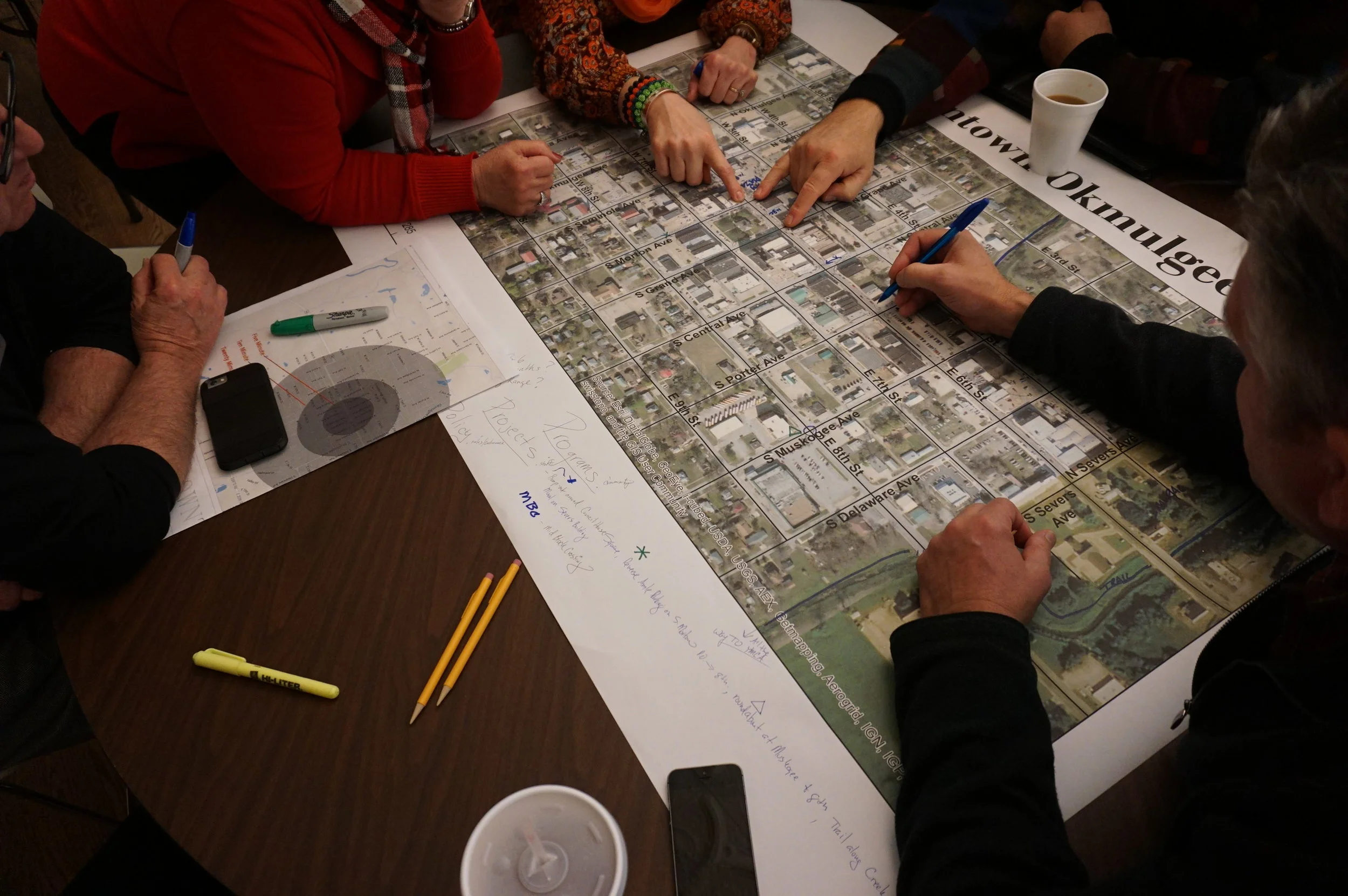Finding you in that room changed my life and stirred my soul. You had been waiting a long time, when the librarian showed me back to a large public meeting room and opened the door. There were some large colorized prints of the neighborhood places hanging around the room on the wall, and you were featured in one of the images. It was the coolest thing I had ever happened upon.
Growing New Roots for Our Colorado Home
Does absence make the heart grow fonder? It has been over a year since writing about my new duty with Colorado Main Street and a lot happened in 2018, just not so much blog writing! I am sorry for such a lengthy break. The move to Colorado was a challenging transition for my family, and spending time acclimating and adventuring together has taken priority.
Moving is like uprooting a plant and putting it somewhere new. Our life-connections (the people and places in our daily lives) are radically altered, and we have to adjust and figure out our place again.
Happy Earth Day with Love
Lucas Accepts New Duty with Colorado Main Street
In late February 2018, I will begin serving as the new Colorado Main Street Architect. The Colorado Main Street Program is housed in the Department of Local Affairs (DOLA), Division of Local Government (DLG) and rests at the absolute heart of DOLA’s goal to “Strengthen Colorado Communities.”
Having grown up in a small town in Oklahoma, improving the quality of life in rural communities is something I care about deeply. My love for rural community development really blossomed during my 6 years with the Oklahoma Main Street Program.
Since its kick-start in 2011, the Colorado Main Street Program has been providing high-quality, state-wide support to...
Renewal is Valuable for Heart and Hometown
There is not a leaf that has fallen without promise. The promise of renewed life and the coming spring. Underlying this is an order that connects all things. Sometimes, architects have a sensitivity toward nature, but it is something that we could all explore further.
Sustainable communities, like the blood and flesh of our own bodies, are made from living parts. Just as the human body regenerates its own cells regularly, it also experiences entropy. In a similar way, we should not forget...
Conservation-Based Development is a Return to the Land
Appreciating conservation-based development is to understand that we exist within something larger. Like a log being split, most development has torn us from our relationship with the land. Our natural environment not only provides the context for life, it is our largest and most important resource.
For long-time, we lived close to the land and developed a regionally-specific architecture that was built in sympathy to the surroundings. We created commercial centers called towns and cities, and others chose to live on large plots to farm. As Americans became 2 car households, got central air-conditioning, the color TV, and personal computers we have become uncoupled, or split, away from real living on this planet.
"Friendly" Robots and the New Vernacular
My air-conditioner is killing me! Modern technologies like the car, color TV, air conditioning and the Internet have been creeping up over us slowly since the 1950's. They have been slowly killing the Earth, homogenizing our beautiful, regionally-specific design styles, and breaking up our communities. It's Creeping Death! (music reference).
New technologies (e.g. the IPad) have taken away the American traditions of walking to the corner store, watching the kids play in the street, and visiting with neighbors from porch to porch. These slices of American life used to bring us together, but modern technology seems to be pulling us all apart. All our computers and robots are making us soft.
Maryland reACT House Celebrates the 7 Generation Principle
In my tour of the 2017 Solar Decathlon, Team Maryland was my favorite. Their project called reACT (ie. Resilient Adaptive Climate Technology) proved to me that a sustainable future needs to merge indigenous/cultural traditions along with modern technology. This is not just about energy either. Even though the architecture and engineering were exceptional in this design, the incorporation of cultural traditions gave the house much more impact than the rest of the entries at the Solar Decathlon.
During my tour of reACT, I spoke with some of the team and learned about the Native American philosophy called the "7th Generation Principle". This simply means that we should think about our future descendants 7 generations from now (or about 140 years) and honor them by leaving the world better.
The Big Day: Facilitating a Successful Design Charrette
Over the past two posts we have taken a new angle on design charrettes (fast-paced design workshops). First, we looked at the split paradigm between public and private realms, and how this sets a course for gathering project stakeholders. Then, we looked at gathering a team and took a deep-dive into the home, neighborhood, and downtown realms - even looking at the funky "in-between zones" where ideas can become really interesting. Now, let's wrap this rodeo and outline how to facilitate your own design charrette.
Vision and Teamwork for Successful Design Charrettes
After a short hiatus for a summer break, we are back. We recently began a discussion on design charrettes and now it's time to get down to the nitty-gritty.
Design charrettes are a rapid, solution-seeking workshop that is typically facilitated, but I believe that any family household or community-minded group can come together as a team and work through the same steps to improve their home, neighborhood, or downtown. Even though the underlying process is similar for charrettes in each one of these realms, as the shift from private to public realms advances, complexity and number of participants involved will vary.
Design Charrette: Workshops for Strong & Vibrant Communities
Have you began shifting your point of view? Last week we adopted a big picture view of community sustainability, and considered how each one of us can affect the realms with which we are connected. I like to imagine each one of us as a needle and thread, creating a quilt with others in the community.
Our home, neighborhood, and downtown are the three realms in which we are already fundamentally invested. Unlocking any distracting or preconceived notions about these places, while making sustainable progress, can be accomplished with the aid of an interactive design workshop called a charrette.
Your Common Thread Stitches a Vibrant Community
Do you want to live in a Green Heart Town, where there is a sense of health, community, and legacy? This kind of town can only be a product of community-wide sustainable development, which takes thoughtful planning and action. At the center of the effort, I see each one of our lives as a common thread skillfully used to create better places for everyone to live, work and play.
The transformation begins by loving our family and community well, caring for our neighbors, and becoming more future-minded. The wonderful paradox is that being future-minded also makes our lives better today, too!













